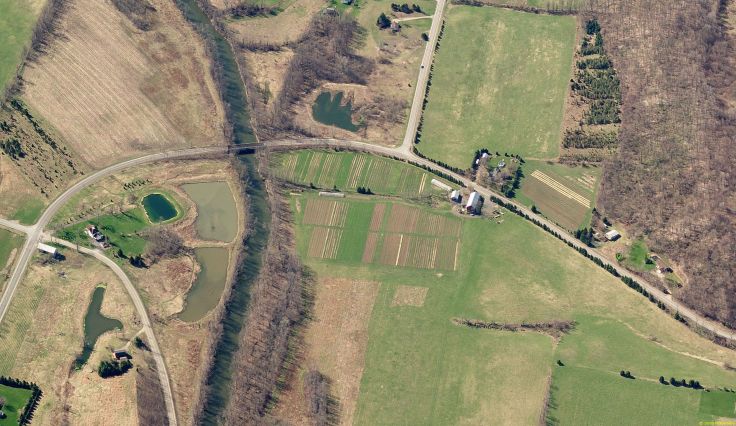
While most people understand the urgency of reducing the use of fossil fuels and resulting carbon emissions, fewer realize that a companion path is just as urgent – restoring carbon in the soil. Fully a third of the excess carbon now in the atmosphere used to be in the soil. Poor land management and industrial farming methods released that carbon into the air. Before forests and grasslands were converted to field agriculture, soil organic matter generally composed 6 to 10% of the soil mass. These days, agricultural fields in the US average 1 to 3% organic matter. Soil scientist Dr. Rattan Lal has calculated that “a mere 2 percent increase in the carbon content of the planet’s soils could offset 100 percent of all greenhouse gas emissions going into the atmosphere.” Using traditional methods, organic farms like Peacework are putting carbon in the soil and keeping it there.
Without requiring a billion dollar contraption like the one the tar sands folks boast about, Peacework cooperates with Nature to increase soil carbon. The first and simplest practice the farmers use is to keep plants growing as much of the year as possible. Plants are the miraculous carbon pumps – and they work for free. Through photosynthesis, the chlorophyll molecule in their leaves allows plants to absorb energy from sunlight and to use that energy to separate water molecules into hydrogen and oxygen. The plant releases the oxygen back into the air, and combines the hydrogen with carbon dioxide to make simple carbohydrates such as glucose. This process is so active that an estimated 15% of all the carbon dioxide in the atmosphere moves through photosynthetic organisms every year!

At Peacework, the farmers only till the soil where they are going to plant annual crops, on about 15 acres of the 109 acre farm. They leave grass or other vegetation everywhere else. And as soon as they harvest a crop, they plant a cover crop so that the soil is covered by living plants.
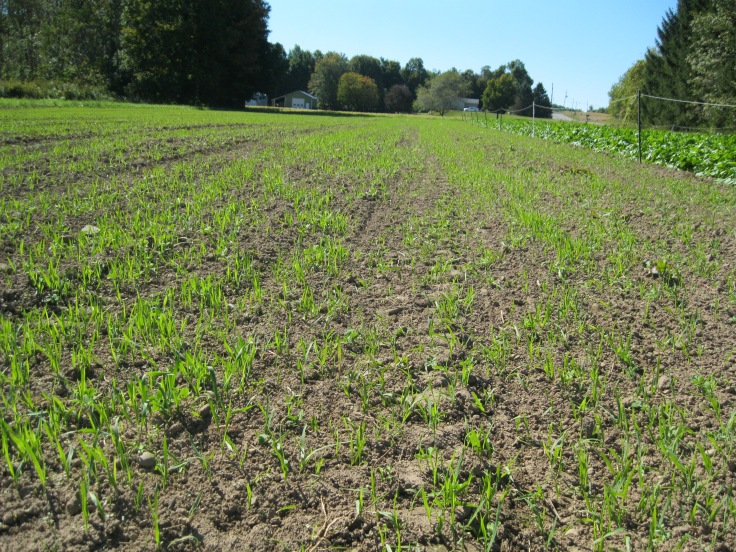

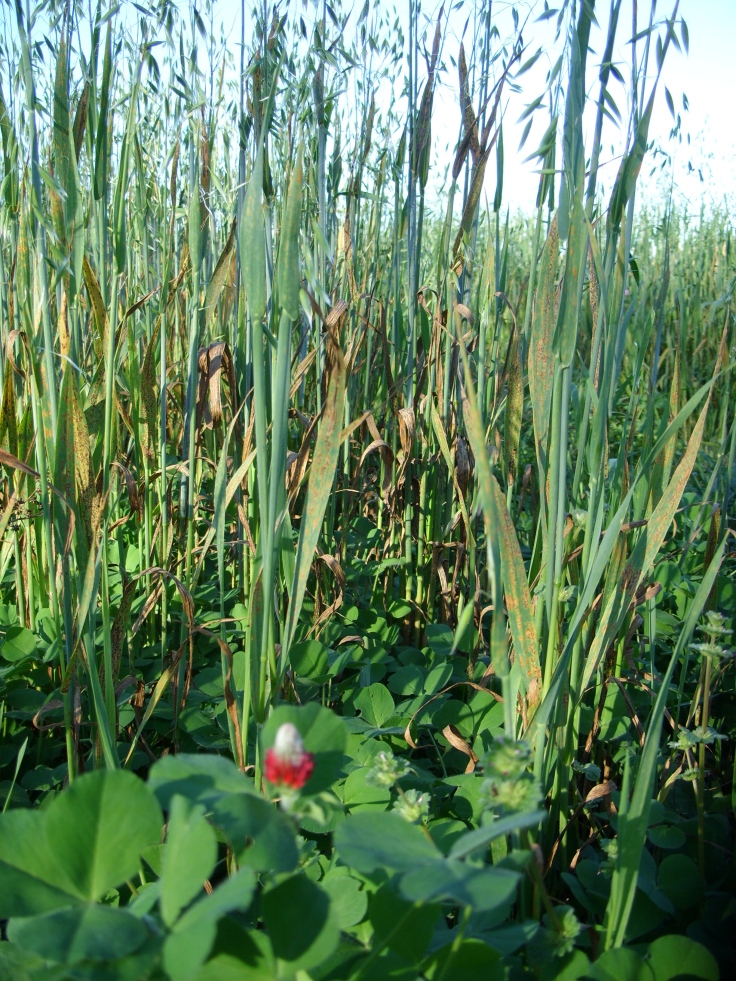

Cover crops or green manures are plants that farmers grow to protect the soil from wind and water erosion, and to add organic matter (58% carbon) to the soil. The main ingredient in organic matter is carbon. Soil that has high organic matter acts like a buffer against the fluctuations of weather. When it is dry, the organic matter holds moisture that crops can access, reducing the need for irrigation. When rains are heavy, the organic matter sponges up the water, reducing run off and erosion. As an extra bonus, organic matter provides the nutrients that plants need.
Sometimes, the Peacework farmers even plant the cover crop before the vegetable crop is harvested.
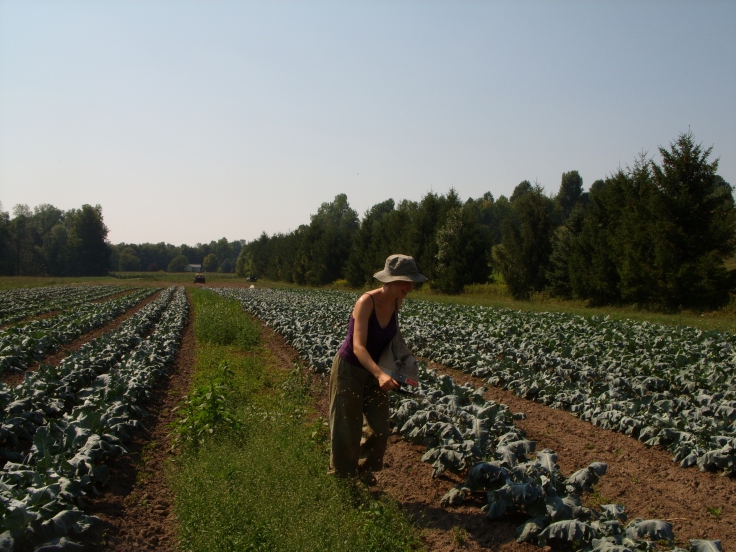


Broccoli, for example, continues to produce heads and florets long into the fall when it is too late to plant cover crops like oats or rye. So once the broccoli has gotten a good start growing, the farmers underseed the broccoli with the cover crop. That way, the cover crop germinates, starts to grow under the shade of the broccoli, and then takes over when the broccoli has been harvested. If the cover crop of choice is oats, the plants die during the winter, leaving a thick mat of mulch to protect the soil. If it is rye, the plants go dormant during the coldest months and then grow vigorously in the spring. When the cover crop is a mixture of rye and vetch, a legume that fixes nitrogen in the soil, there is enough fertility to fully nourish a heavy feeder crop like cauliflower.

In the spring, the farmers mow and chop the rye/vetch, turn it into the soil to feed the multi-gazillion microherd, and the well-fed microorganisms feed the next vegetable crop.
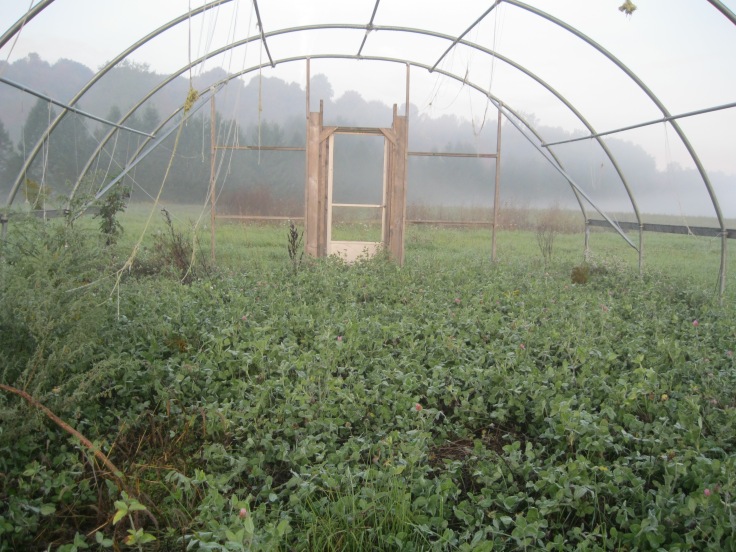
Like organic farmers around the globe, the Peacework farmers do their best to keep the soil healthy. That is the one orthodoxy in organic agriculture – healthy soils make healthy plants so the people or animals who eat them will be healthy. To maintain soil health, the Peacework farmers never use synthetic nitrogen fertilizer, a fossil fuel derivative, and instead feed the soil with cover crops, compost or composted chicken manure and minerals to balance fertility. Studies at the Rodale Institute where scientists have compared conventional fertilizing with organic methods over a 30 year period demonstrate that the use of synthetic nitrogen depletes the carbon in the soil. By avoiding synthetic nitrogen, organic farmers also economize in their energy use by 30% compared to conventional farms.
The strategies that the Peacework farmers use to control insect pests and diseases also relate to soil health. Integrated crop management is probably the best term to describe their approach. They carefully rotate the vegetable crops, never repeating crops from the same family on a piece of ground two years in a row. Knowing that even organically acceptable insecticides and fungicides rarely only kill the target pest, the Peacework farmers only spray as a last resort, focusing on creating the healthiest possible environment for their crops by maximizing biodiversity above ground and below.
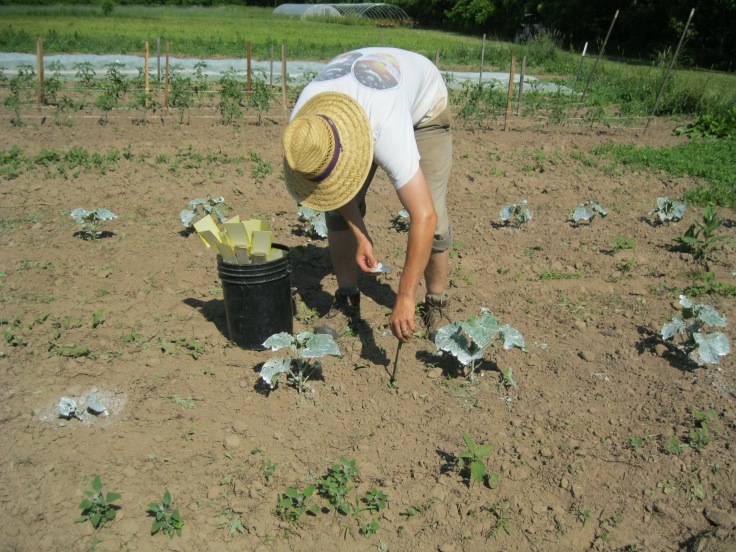
The farm grows over 200 different varieties. In addition, many wild plants thrive along the field edges, their flowers and nectars attracting beneficial insects like lady beetles, soldier bugs, praying mantises and lacewings.
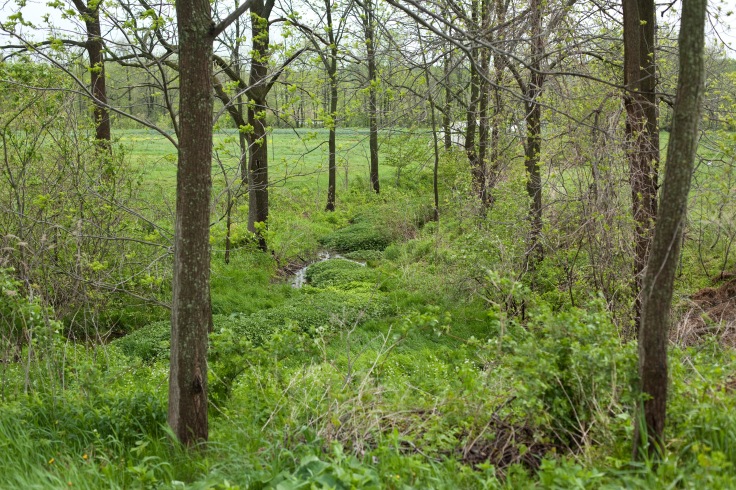
And since the farm does not use synthetic insecticides or herbicides, birds, snakes, frogs, toads and bats abound, assisting the farmers in the pest control duties.

If you look very closely, you can see the bats snoozing under the overhang near the peek of the roof of the big barn.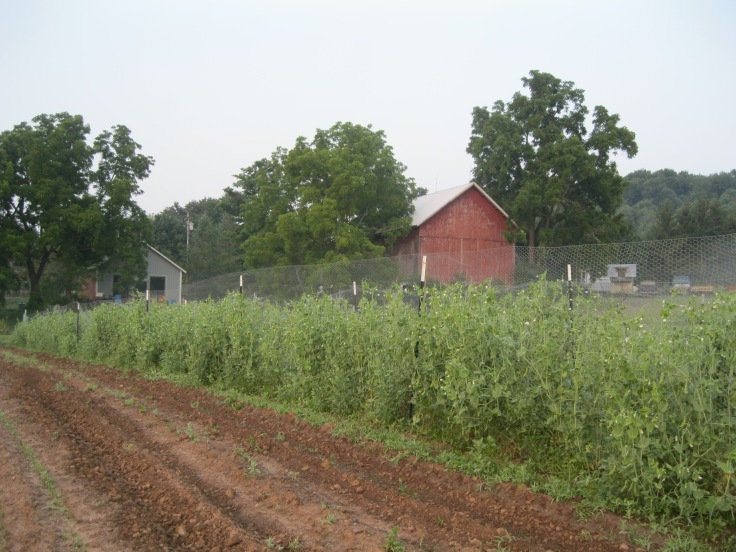
When Peacework farmers cultivate to reduce weed pressure, we aim to get the weeds just as they germinate so as to disturb the soil as little as possible.
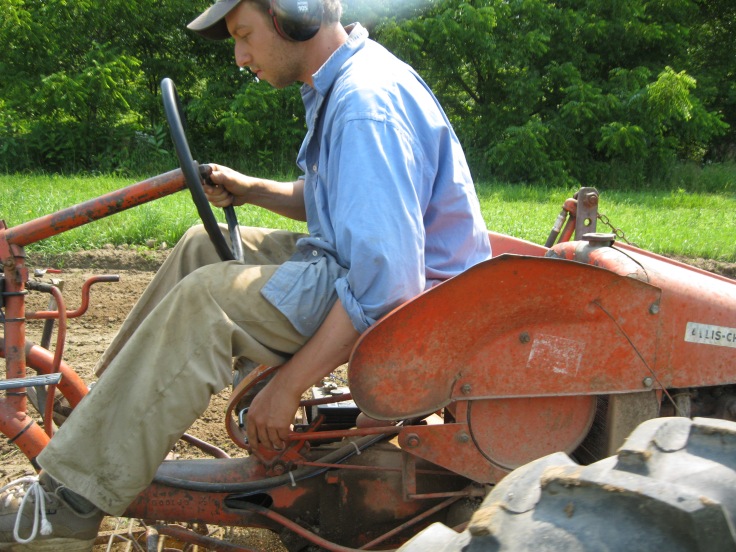
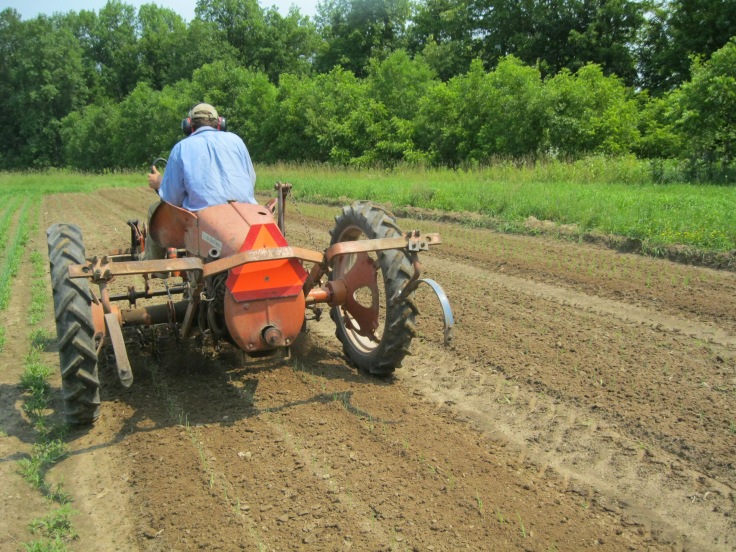
Since Peacework has been at the old Humbert Farm on Welcher Road, Liz, Greg and Ammie have put most of their energies into growing vegetables on the fields near the barn and the Fairville field up the road. They have rented the 70 acres of hay ground to John Ramph, who uses the hay to feed a herd of bison.
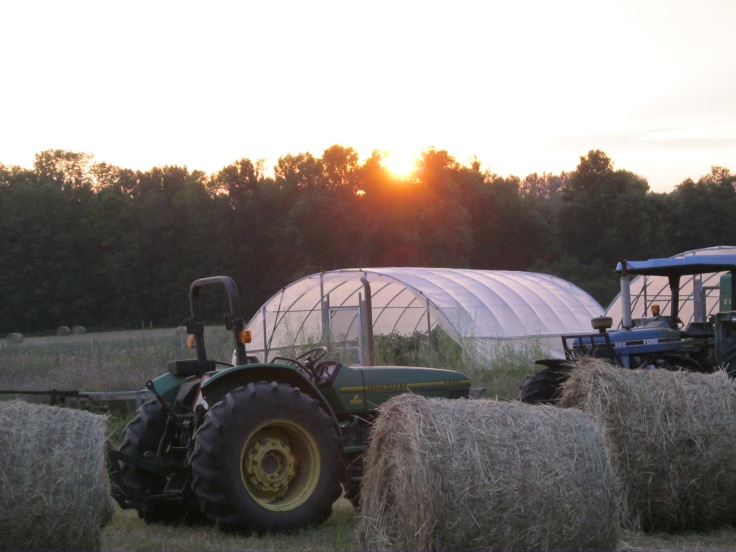

This year, Peacework is taking back ten acres to use as pasture for the team of draft horses Eli Rubin is bringing to the farm this month. Eli calculates that by using rotational grazing, the ten acres will feed the two horses through the summer and fall. Rotational grazing has the additional benefit of building more carbon in the soils through the interaction between the horses and the field. While munching the grasses and other plants, the horses contribute urine and excrement, fertilizing as they go.
***
We hope you will come to this year’s May Day Celebration at Peacework (Sunday, May 1 from 2 – 6 pm) to see for yourselves a farm that is doing its best to mitigate against climate change. Come dance around the May Pole, tour the farm, meet the new team of horses, and share a potluck meal with the Peacework Organic CSA community!
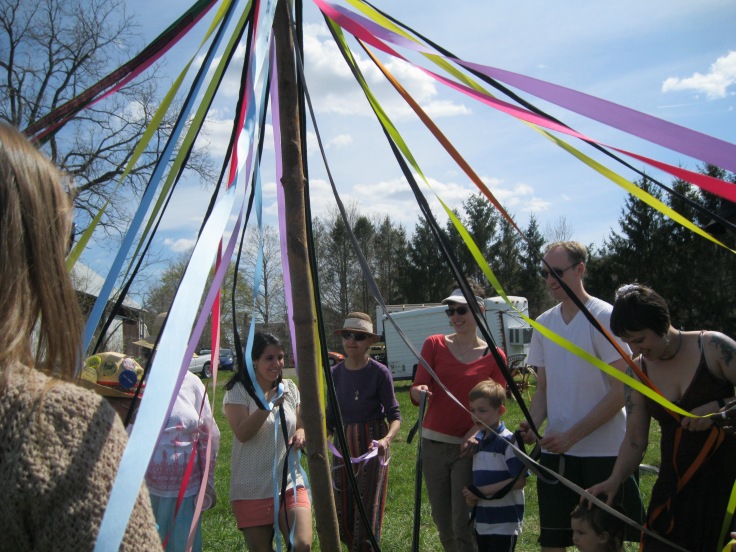


June 20, 2016 at 5:03 pm
I’m very interested in this; it’s a piece of information about climate disruption that isn’t talked about much, and it would be a big help to me to have access to more of the sources for your first paragraph – that a third of the excess carbon now in the atmosphere came from the soil. And I’d love to know more about Dr Lal’s work. Can you tell me where to look? (I saw the article originally in the PASA journal, but the way – and I’m looking forward to reading more of your blog.)
LikeLike
July 23, 2016 at 5:23 pm
Sorry, I never checked for comments so did not see this till today. You might look at the NOFA Mass website. They have a whole section on organic and climate change with references and an excellent white paper by Jack Kittredge.
LikeLike